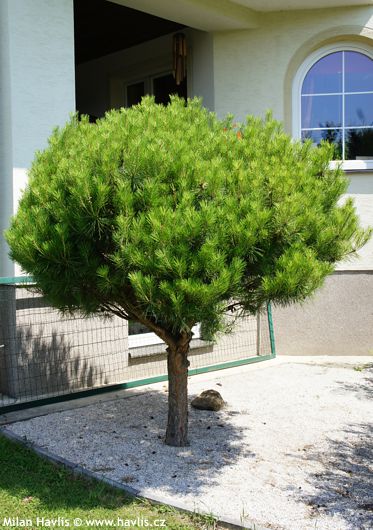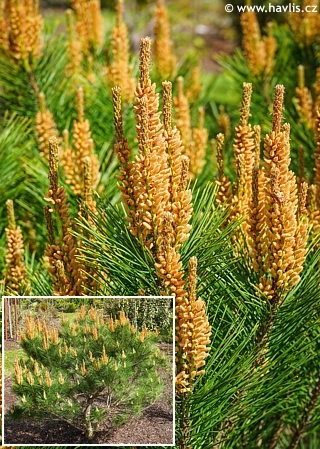Pinus pinea SELEKCE Italian stone pine, umbrella pine
Pinus
Being a plant lover based in Europe and perhaps a bit of a traveler, too, I suppose you must have been to the Mediterranean at least once in your life, am I right? And there, you must have come across one of the key features of the Mediterranean landscape apart from the Tuscan cypress – the Italian stone pine. Older and mature specimens are immediately recognized by their almost flat-topped, broadly umbrella-shaped canopies of great density, which provide shade during the hottest months of the southern summer. Our question is obvious – how hardy is it? Can we grow it, too? In some areas we can.
As an ornamental tree, umbrella pine has been used since ancient Rome, when it was deliberately used to line the most significant street Via Appia and became one of the most important symbols of Rome. Probably the greatest expansion beyond the Mediterranean Sea shores was experienced only during the Italian Renaissance around at the end of the 15th century, when ornamental gardening became a fashion and began its glory. Suddenly, every castle court whose climate could afford it wanted an umbrella pine tree. The slowly developing travel possibilities of rich people, who could afford the extravagance of having trees brought not only from distant countries, but also from one continent to another, meant a further expansion to the interior of south-European countries and to other continents with a Mediterranean climate. Therefore, from the end of the 18th century, umbrella pine appears in Africa, Asia, Australia, America, and the British Isles.
All this only covers the modern history of the tree as a decorative item. However, primarily umbrella pine has long been sought after and later intentionally cultivated (already approx. 6000 years ago) for food as it produces a large number of edible seeds. The trees must be 15-20 years old, and the seeds mature after 3 years from pollination which is the longest period of any known edible tree. The seeds are hidden in large, rounded cones, they have small but ineffective wings, and are spread by animals and humans.
Italian stone pine, often called just umbrella pine, is a long-lived conifer with fresh green, evergreen, and relatively soft needles 10-20 cm long, which grow in pairs and densely cover the branches creating an impenetrable screen. Young plants grown from seeds till the age of about ten years first produce short, silvery blue-green, single needles (not in pairs) and those shoots will form a framework from which, after they have strengthened, standard green, paired needles will be produced.
Umbrella pine is a large and long-lived tree for hot, dry, and sunny habitats. It grows 30-40 cm per year and can be pruned in spring before new needles emerge, or you can remove or shear its new shoots as they grow longer in mid-spring. The bark is medium brown, deeply fissured and very beautiful. The wood is hard, strong, and tough and contains little resin. It is most often grown as a single-trunk tree, but it is a common practice to remove all lateral branches from the lower framework of the canopy from a certain height, which results in a picturesque multistemmed structure which looks like a palm with fingers holding up a green cloud with needles. Young plants are bushy and rounded in shape, and with age, its canopy naturally forms a dope-shaped to almost flat top of almost the same spread as the height of the tree. Despite the ultimate tree size, it keeps its fluffy and fine appearance.
Like most other pines, this one, too, requires full sun and a rather drier habitat. It hates wet and waterlogged ground, so drainage is essential. Soil pH doesn't matter. It has a strong, deep and spreading root system which helps prevent the erosion yet is not aggressive and does not heave pavements or road asphalt. Once established it is almost indestructible. We only sell trees that we select after several years having tested that they withstood at least -20 °C without protection. Nevertheless, we recommend planting umbrella pine only in the warmest locations on protected sites of USDA zone 7 and higher.
Last update 22-07-2023
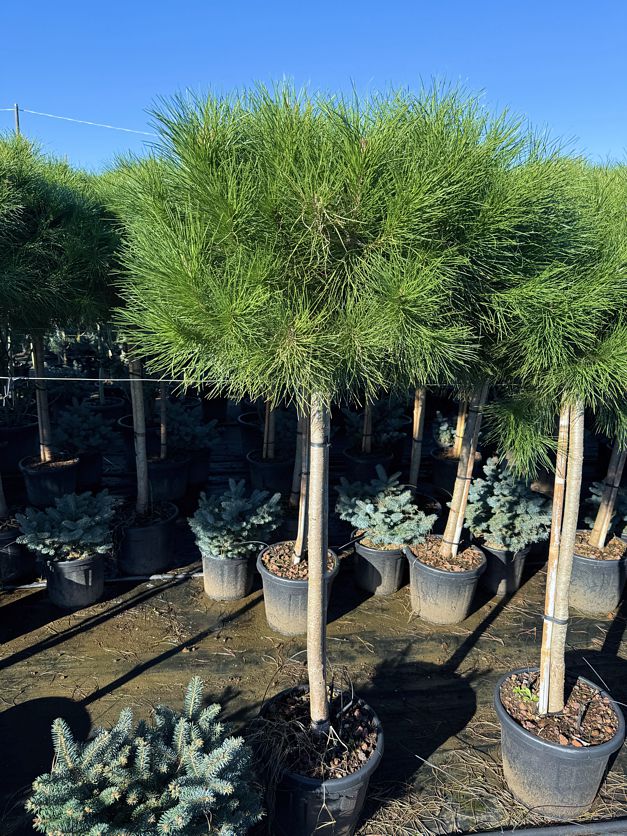
3 638 Kč
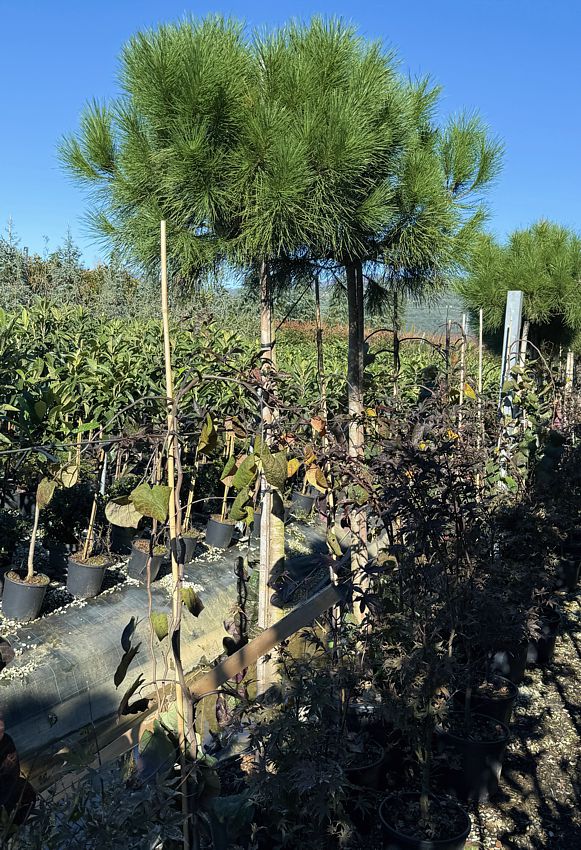
8 925 Kč
Goods are shipped all over Europe. For Russia and U.K. and for further details please read about SHIPPING OPTIONS HERE.
Are you interested in a serious discount for orders NOV-FEB? Check your options here.
THE PRICES INCLUDE VAT of 15%. For quick conversion you can use 1 CZK = approx. 0.04 EUR
- STANDARD QUALITY - Plants of this group are 1st class quality with number of branches and overall density adequate to their size and age, considering they were container grown.
- DE LUXE QUALITY - This label guarantees a luxurious quality of manually selected plants that, compared to their height and age, are exceptionally dense and beautiful.
- EXTRA - These plants are usually mature and bigger specimens with exceptional overall appearance.
- STANDARD (as described in the plant form) means a tree with a trunk of 190-210 cm and a crown at the top, unless specified differently. The commercial size for trees is their girth measured in the height of 1m from ground.
- HOBBY - These plants are of the same quality as our standard-quality plants but younger and therefore cheaper.
- SHRUB - a woody plant with branches growing bushy from the ground level.
- HALF-STANDARD or MINI-STANDARD - a small tree with shorter trunk, its size is usually specified.
- FEATHERED - These are trees with branches growing already from the base of the trunk and up along the stem.
- GRASSES and PERENNIALS - Sizes given usually read the diameter of the pot or the clump, as specified.

































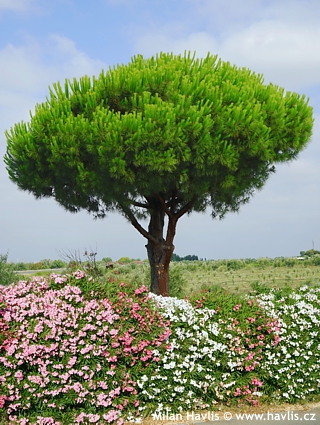
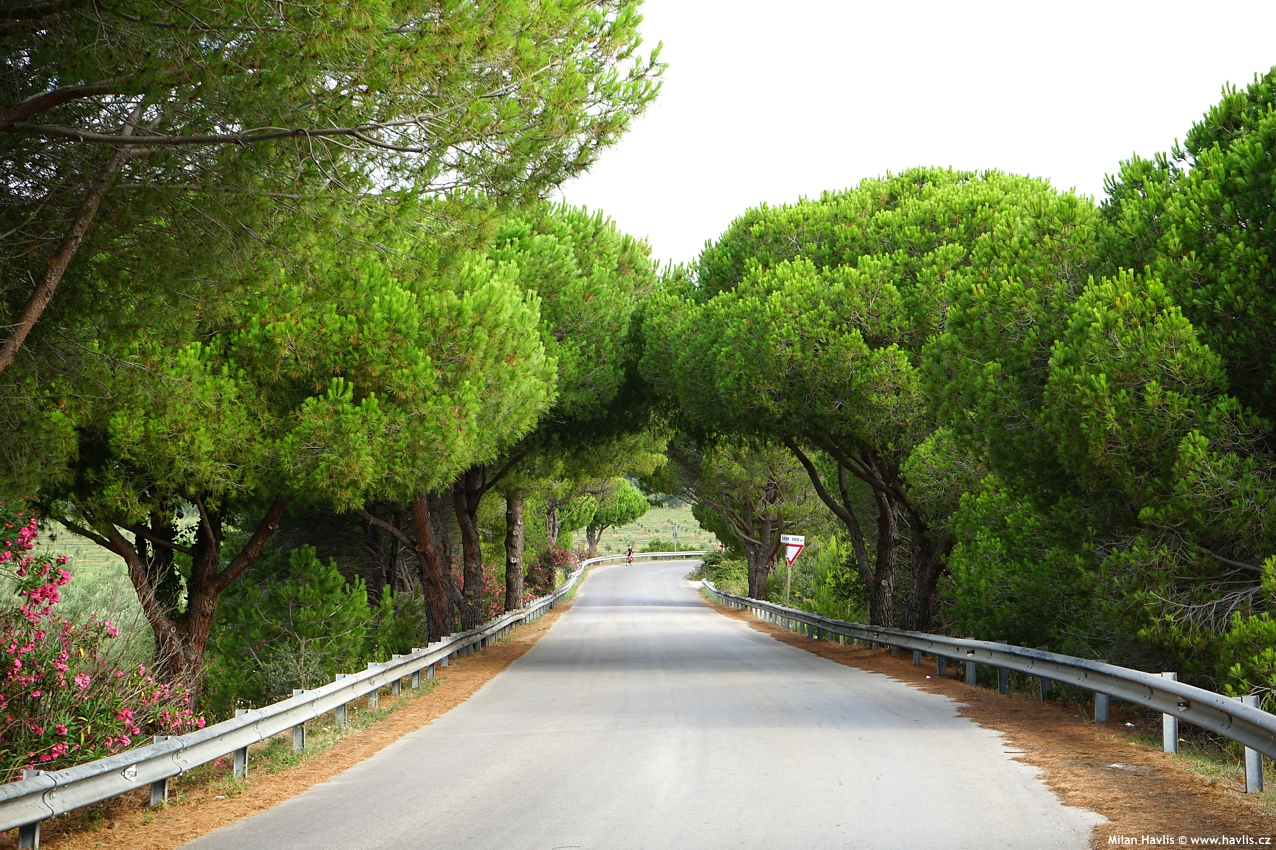
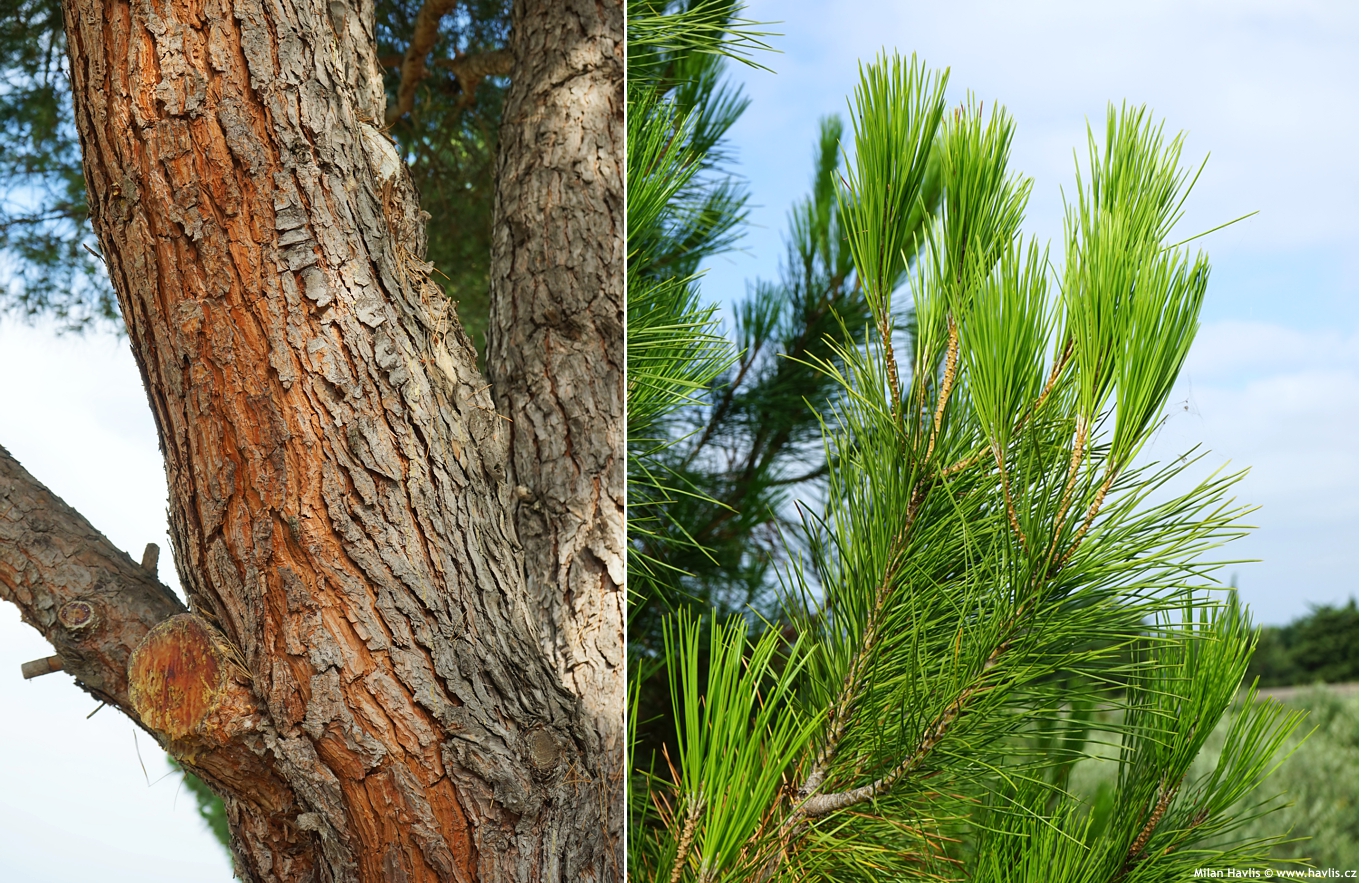
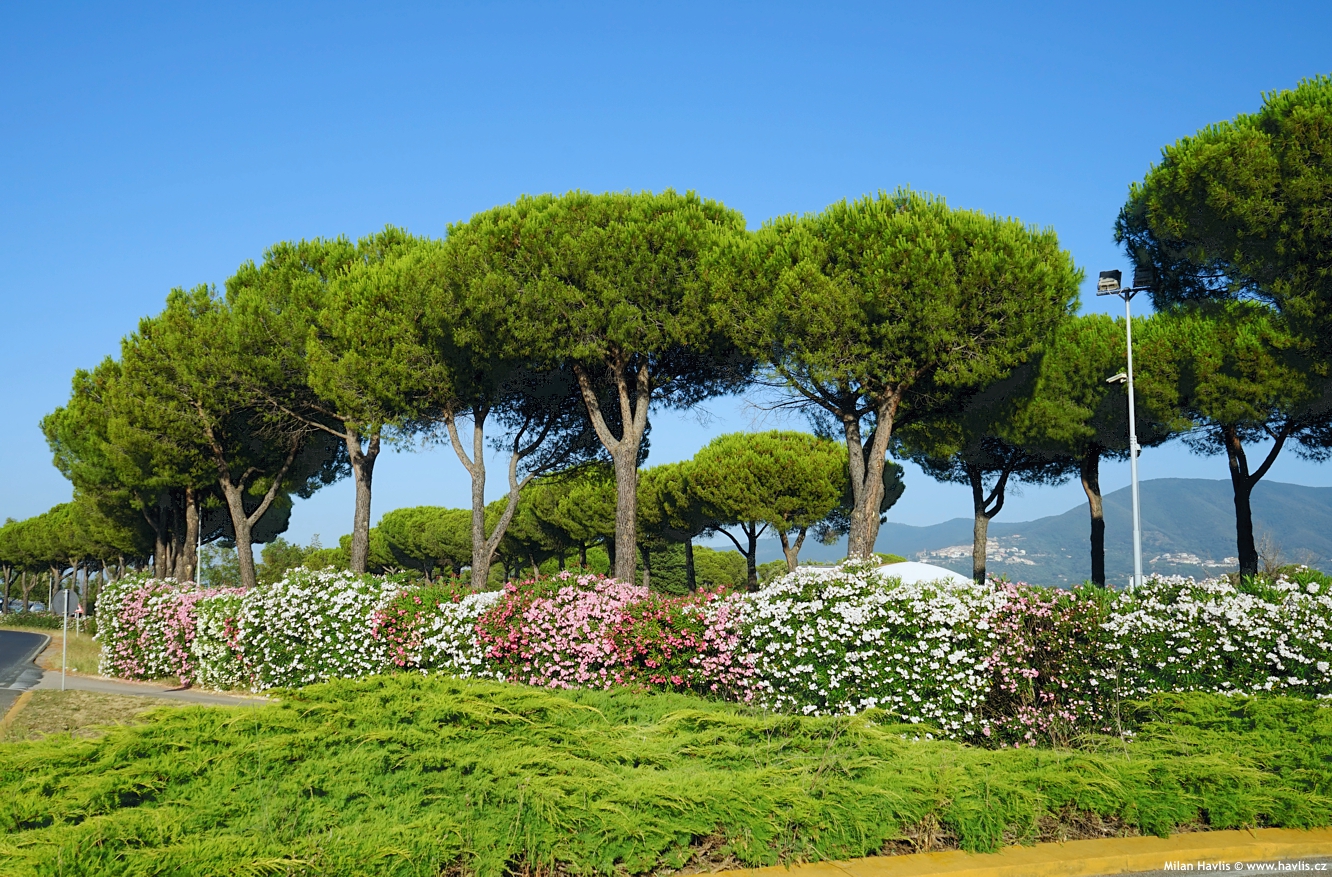
.jpg)
.jpg)
.jpg)
.jpg)

